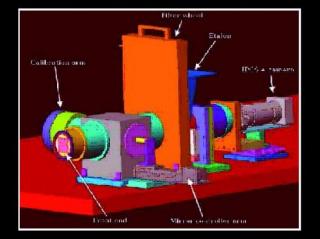
Se ha llevado a cabo la construcción y la puesta a punto de un nuevo instrumento “GHaFaS” (“Galaxy Hα Fabry-Perot Spectrometer), en el telescopio William Herschel del ORM. GHaFaS es el sucesor, pero con propiedades técnicas mucho mas avanzadas, del antiguo TAURUS. Usando un detector de tipo IPCS, con cero ruido de lectura y una respuesta muy rápida, se puede hacer mapas tridimensionales, en intensidad y campo de velocidad, a través de galaxias completas, en las líneas de emisión de su gas ionizado, notablemente en Hα. GHaFaS se uso por primera vez en julio de 2007, y funcionó de forma normal
